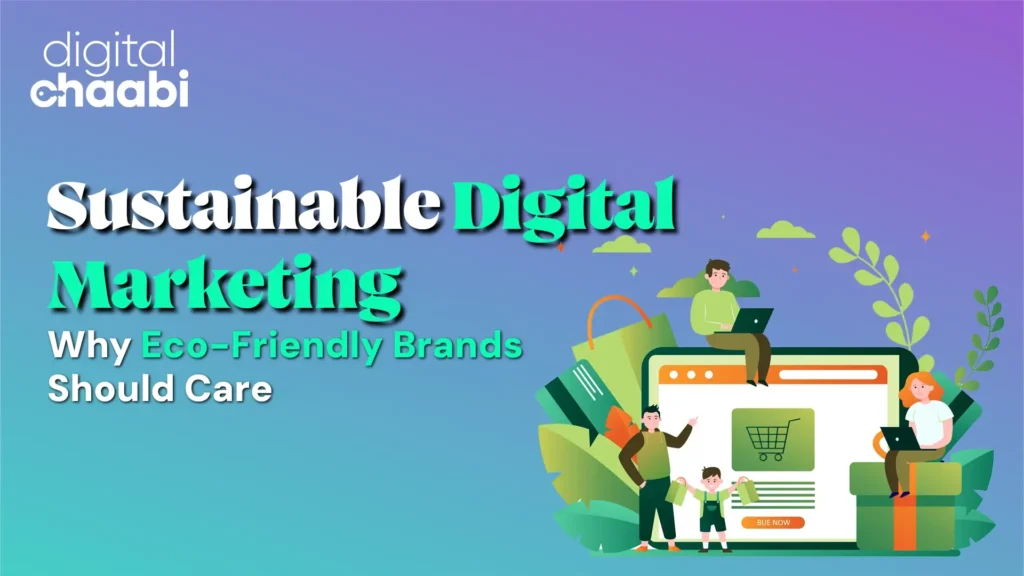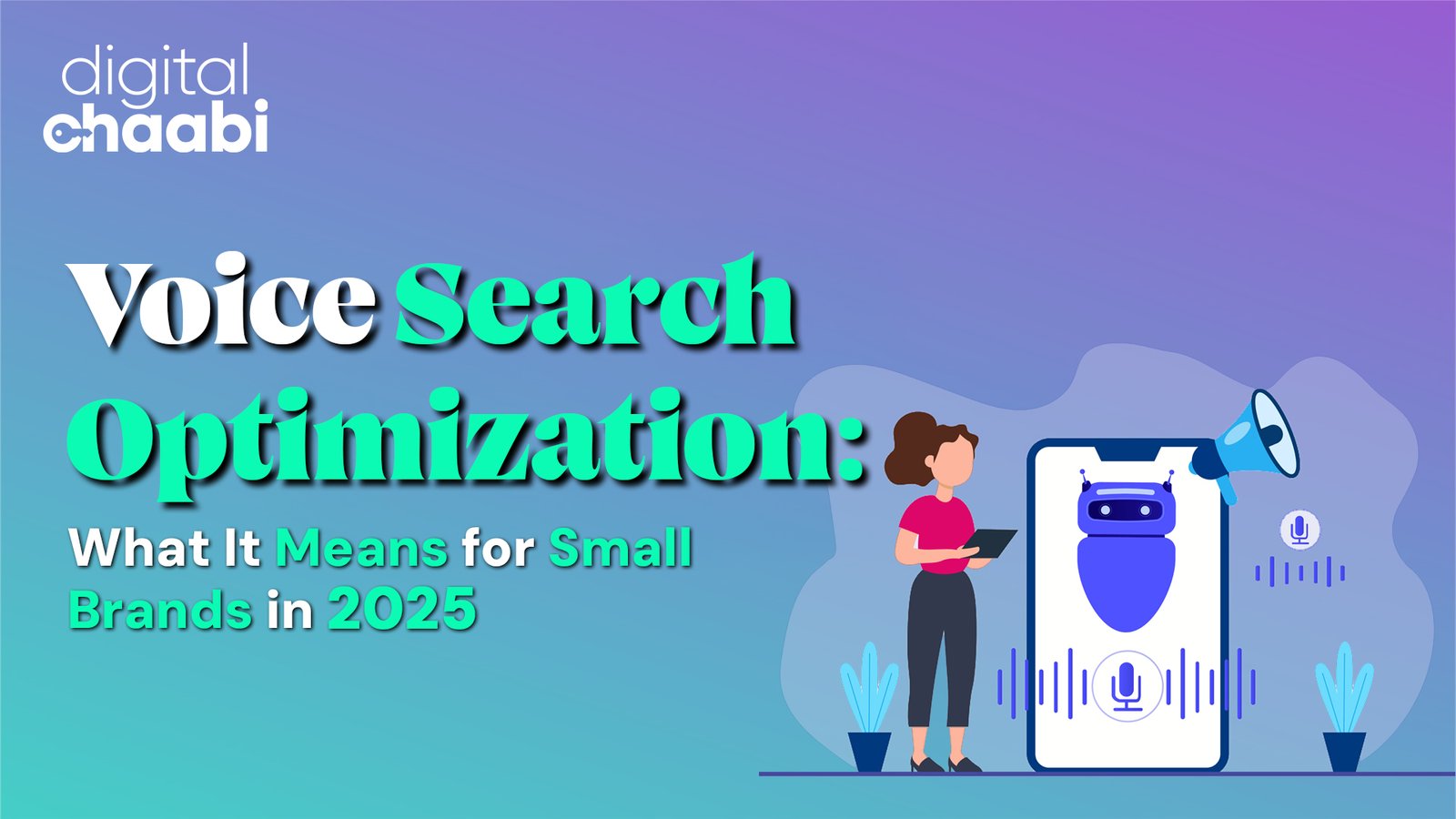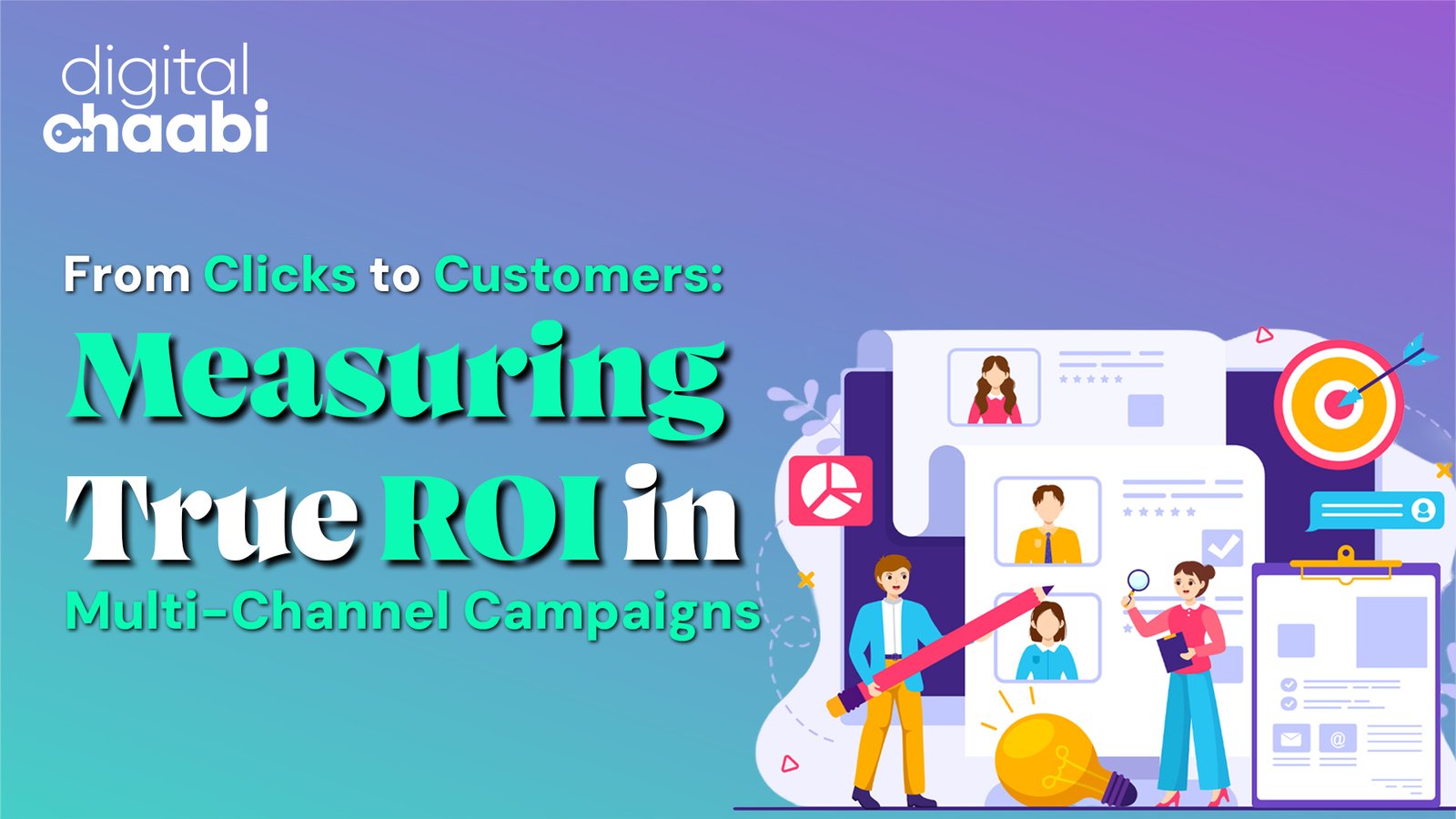In the modern, fast-paced world, digital companies are not just expected to sell but also to be a source of care for both the people they serve and the environment. As more consumers become aware of the effects of climate change on sustainability, they are more inclined to support environmentally friendly brands that align with their ideals.
This is the point where the concept of sustainable digital marketing comes into play. It’s not only about marketing products online, but about doing so in a way that minimizes environmental impact and promotes a more sustainable future.
For eco-friendly businesses, sustainable marketing isn’t merely a trend; it’s a commitment.

What Is Sustainable Digital Marketing?
A sustainable digital strategy is the practice of using digital marketing techniques that are ecologically sustainable and mindful of social issues.
In simple terms, it’s about executing campaigns that don’t use up energy or data yet still reach your intended audience efficiently.
For instance:
- Utilizing eco-friendly web hosting solutions that run on renewable energy.
- Making content that promotes sustainability.
- Beware of spammy advertisements or heavy, data-laden content that contribute to digital pollution.
Why It Matters for Eco-Friendly Brands
If your business is promoting eco-friendly products, but employs harmful digital techniques that send an inconsistent message, it is problematic. Customers are expecting green brands to follow through with what they preach both offline and online.
By taking a stand for sustainable digital marketing, eco-friendly brands can demonstrate a genuine commitment to the environment and attract customers who are committed to making ethical choices.
The Growing Importance of Green Marketing
Today’s consumers are highly concerned about the environment. Research shows that people are more likely to purchase from ecologically conscious brands.
If eco-friendly companies adopt a sustainable approach to digital marketing, they build a positive image and increase confidence. It’s not only about selling products, but it’s about establishing long-lasting connections with mindful consumers.
How Digital Marketing Affects the Environment
It’s possible that you don’t realize, however, that every online activity requires energy. When we show advertisements, send emails, and host sites, the data is transferred through servers that require electricity, which is often supplied by non-renewable energy sources.
Examples include:
- Large-scale email campaigns that eat server power.
- Websites that are heavy on data boost carbon emissions.
- Continuous online advertisements that employ high-energy algorithms.
Sustainable digital practices can help reduce the carbon footprint of your digital activities.
Also Read: Digital Marketing Trends That Will Dominate 2025

Ways to Make Digital Marketing More Sustainable
Here are some easy ways for eco-friendly brands to improve their online presence:
1. Choose Green Hosting Providers
Use web hosting services powered by renewable energy. It’s a small change that can have a significant impact.
2. Optimize Your Website
Reduce images, tidy up the code, and speed up loading times. A lighter website consumes less energy and data.
3. Focus on Quality Over Quantity
Instead of posting every day, make sure you share valuable, meaningful content. This helps reduce digital clutter while ensuring engagement.
4. Use Email Marketing Wisely
Send personalized emails to interested users instead of saturating large lists. It’s more efficient and long-lasting.
5. Support Sustainable Ad Platforms
Specific advertising platforms have a focus on sustainability. Selecting them ensures your advertising aligns with your company’s environmental objectives.
The Role of Content in Sustainable Marketing
Content plays a significant role in sustainability in digital advertising. Eco-friendly brands need to produce content that not just promotes their products but also educates people about the environment.
Examples include:
- Blog posts about eco-friendly living.
- Videos showing sustainable production processes.
- Social media campaigns aimed at reducing waste.
When your brand’s image is portrayed as genuinely concerned about the planet, it’s more likely that they will believe in and trust it.
Sustainable Social Media Practices
Social media can be compelling, but it can be a waste if misused recklessly. Here’s how to make it viable:
- Utilize simple images instead of huge video files.
- Work with influencers who are on your green mission.
- Posts should be scheduled to prevent automated tools from consuming unnecessary energy.
The objective is to communicate your message effectively, without creating digital clutter.
The Business Benefits of Going Green Digitally
Engaging in digital marketing that is sustainable can bring many long-term advantages:
- Better Brand Image: Consumers see you as a responsible business.
- Customer Loyalty: Eco-conscious buyers become long-term loyal supporters.
- Cost savings: Optimizing tools for digital use can reduce operational and energy costs.
- Improved SEO: Google rewards clean, optimized, user-friendly websites.
- Positive impact: You reduce your carbon footprint online and inspire others to do the same.
Challenges in Implementing Sustainable Digital Marketing
Eco-friendly brands might face a few issues when adopting sustainable digital methods, for example:
- Affordable green hosting.
- Teams of trainers on digital sustainability.
- Measuring digital carbon footprints.
With patience and awareness, these issues are easily overcome. Small steps can lead to a significant change.
How Customers Respond to Sustainable Brands
Customers of today are drawn to brands that are concerned about more than just profits. If you demonstrate that your marketing strategy is durable, people take note. People talk about you, tweet your content, and remain faithful.
The environmental values of your company aren’t just a way to make you famous and help your brand become more important.
The Future of Sustainable Digital Marketing
By 2025, sustainability will be an integral component of digital marketing strategies. Businesses and governments across the globe are already moving towards green processes.
Big and small brands alike must keep a balance between digital growth and the environment. For eco-friendly businesses, this is already underway.

Conclusion
A sustainable approach to digital advertising is not just a buzzword. It’s actually the next significant move for eco-friendly companies. By adopting green hosting, optimizing their content, and encouraging sustainable digital habits, companies can reduce their carbon footprint and build trust with their customers.
The point is clear: Green isn’t just beneficial for the environment— it’s also good for business. Every click, post, and ad can have an impact.
FAQs
1. What is sustainable digital marketing?
Sustainable digital marketing is the application of methods for marketing online that reduce environmental impacts and encourage sustainability.
2. Why should eco-friendly companies care about digital sustainability?
It aligns their marketing strategies with their environmental principles and strengthens trust among customers.
3. What can a company do to create a more sustainable website?
Utilize green hosting, decrease the amount of data-laden content, and improve the speed and layout.
4. Are sustainable digital marketing tools costly?
It’s not at all. Many green tools are affordable and may even save you cash in the end.
5. What are the advantages of sustainable and responsible marketing to small companies?
It boosts the reputation of brands. It attracts loyal customers and reduces digital waste.




